Exploring the Inner and Outer Worlds of Autistic People
Autism influences how individuals perceive, interpret, and respond to their environment. While often misunderstood, the perceptual and cognitive experiences of autistic individuals reveal a world that is rich, detailed, and distinct from neurotypical perceptions. This article delves into the scientific insights, perceptual strengths and challenges, emotional processing differences, and inner mental landscapes characteristic of autism, aiming to foster greater understanding and appreciation of neurodiversity.
Scientific Foundations of Perception in Autism
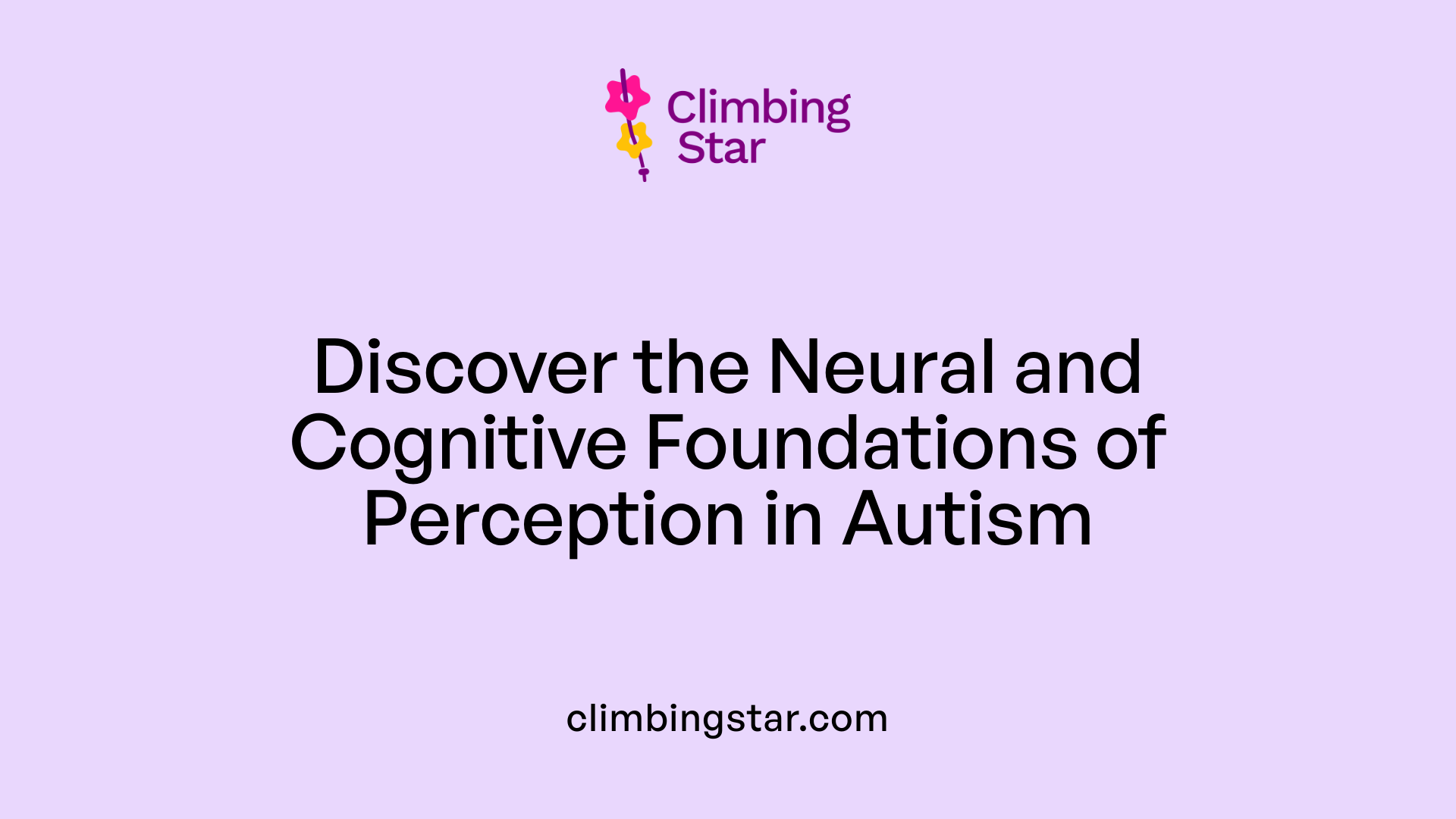
What scientific insights exist regarding perception and cognition in autistic individuals?
Research into how autistic brains process information reveals distinct neural patterns that influence sensations and thought processes. Neuroimaging studies show that adjustments in brain activity impact how autistic individuals perceive the world around them.
One of the notable findings is the difference in visual perception. Autistic people often do not focus on faces in social scenes, instead showing a tendency to examine the edges, patterns, or the center of images. Eye-tracking tests have demonstrated that they tend to fixate on the middle of pictures, even when other objects are present, and generally do not follow the gaze of others as neurotypicals do. This altered visual attention can explain some of the social perception challenges experienced.
Sensory processing plays a crucial role in shaping cognition. Individuals with autism often encode sensory information in an absolute way rather than relative, leading to heightened sensitivity or sensory overload. This means that they might react more intensely to sights, sounds, tastes, or tactile stimuli, which can both be overwhelming and offer unique talents in pattern recognition and attention to detail.
Furthermore, their worldview tends to be described as more physicalist, where psychological traits are viewed as innate and embodied. This perception influences how they understand themselves and others, often resulting in differences in Theory of Mind—the capacity to attribute mental states to oneself and others.
While social cognition can be challenging, some basic perceptual abilities, such as recognizing biological motion, remain preserved. This suggests that some social perception functions are intact, even if their overall social understanding differs.
In summary, neuroimaging research highlights that autism involves unique neural connectivity and activity patterns that affect perception and cognition. Recognizing these differences fosters better understanding of how autistic individuals experience the world and guides supportive strategies.
Perceptual Strengths and Challenges in Autism
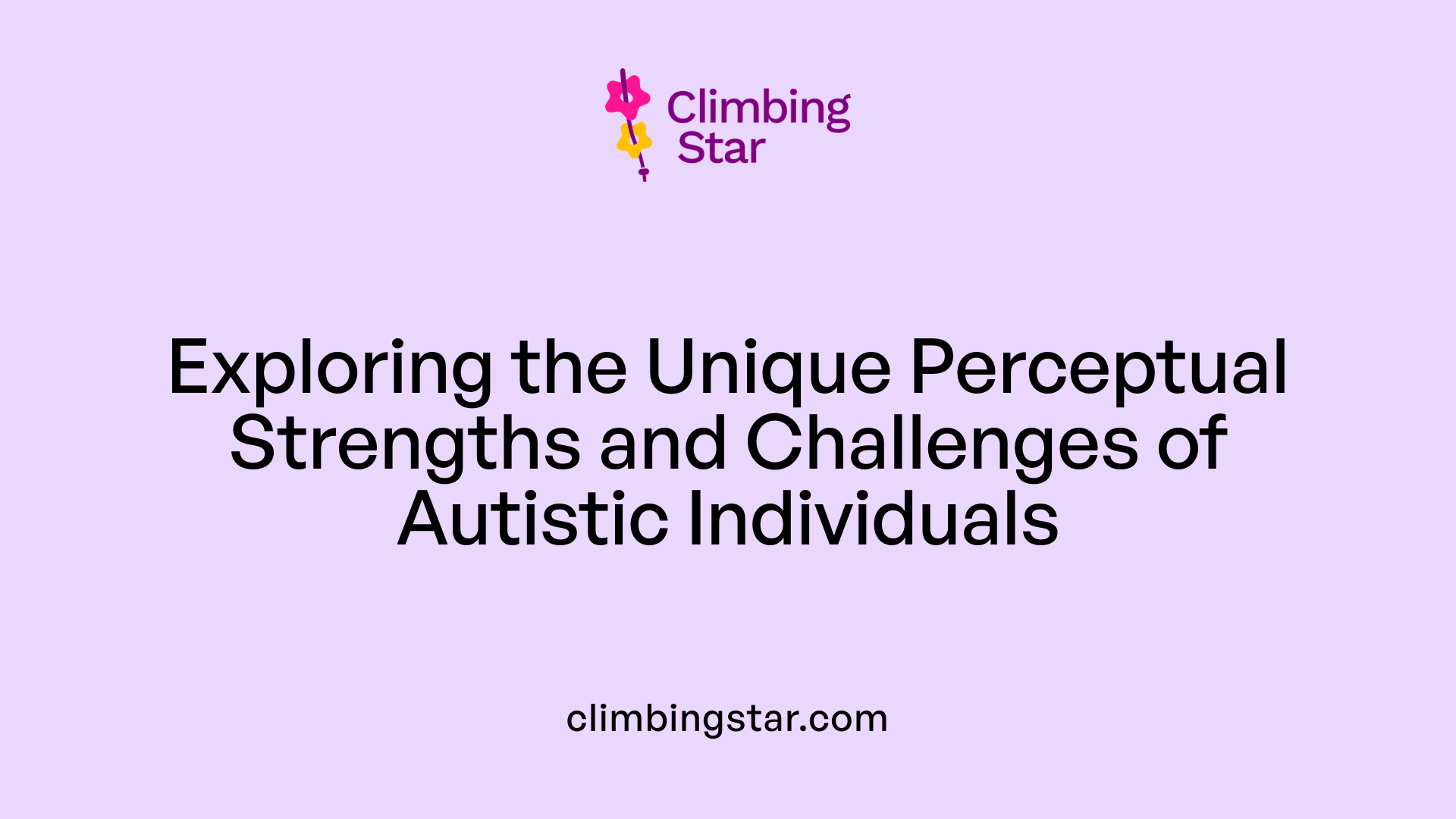
What are some perceptual and sensory strengths and challenges of autistic people?
Autistic individuals often possess remarkable perceptual abilities that can set them apart from neurotypical peers. They tend to experience heightened sensitivity across multiple senses, including visual, auditory, olfactory, tactile, and taste modalities. For example, many autistic people have enhanced visual perception, noticing fine details, patterns, and textures that others might overlook. They are also more likely to experience intensified colors and sounds, which can contribute to a richly detailed view of the world.
This heightened perceptual acuity often translates into exceptional talents. Many autistic individuals excel in areas that demand pattern recognition, such as art, music, mathematics, or memory-focused tasks. Such strengths are sometimes linked to their Systemizing tendencies, allowing them to focus deeply on specific interests or skills. These abilities can lead to creative accomplishments, technical skills, or extraordinary attention to detail.
However, these perceptual strengths come with notable challenges. Sensory overload is common, where overwhelming stimuli—bright lights, loud sounds, strong smells—become difficult to filter or ignore. This can result in sensory overwhelm, fatigue, or distress, often requiring strategies for sensory regulation. Conditions like hyperacusis (increased sensitivity to sound) or tactile sensitivities can make everyday environments uncomfortable or even unmanageable.
Moreover, some autistic individuals struggle with automatic Gestalt processing—the ability to perceive whole patterns or face structures quickly. This can affect their ability to recognize faces and interpret facial expressions or emotional cues, impacting social interactions. Difficulty filtering irrelevant stimuli also contributes to distractibility, decision paralysis, or focus on certain objects or details at the expense of broader context.
Despite these challenges, their perceptual and cognitive abilities are valuable assets. Supportive environments that reduce sensory overload and promote sensory regulation can help autistic individuals harness their talents effectively while minimizing distress. Recognizing the balance between strengths and challenges is essential in fostering understanding and inclusion.
The Emotional Landscape of Autism
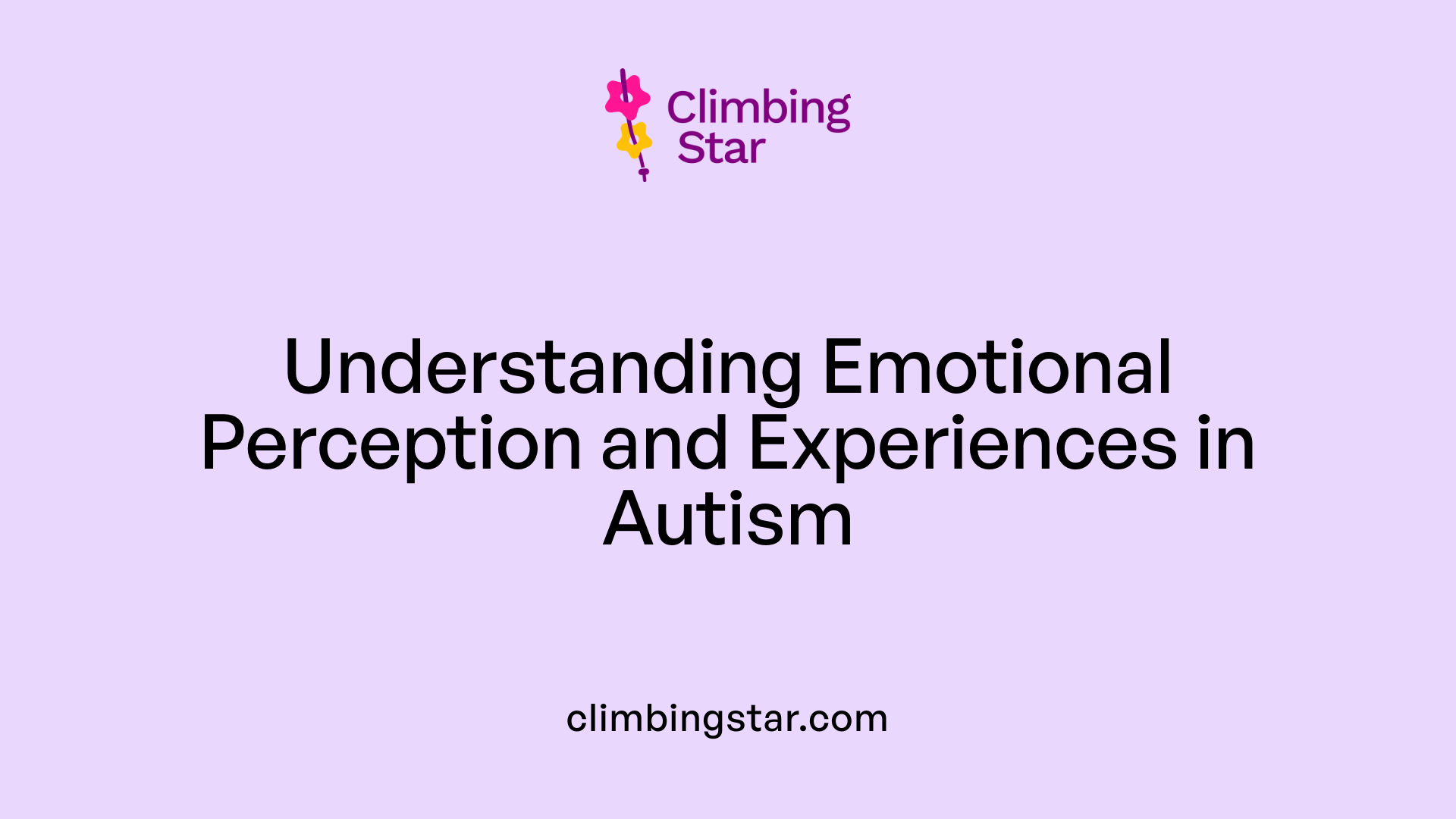
How does autism affect emotional perception and responses?
Autism can significantly influence how individuals perceive and react to emotional cues in their environment. One notable aspect is the difficulty many autistic people face in recognizing facial expressions and body language. They might not look closely at faces or focus on different parts of an image that convey emotion, such as the eyes or mouth.
Research using eye-tracking has shown that autistic individuals tend to focus on the center of images and edges rather than faces. This focus pattern makes it harder to pick up on subtle emotional signals conveyed through facial expressions or gestures.
In addition, autistic individuals often experience differences in bodily awareness related to emotions, known as interoception. Reduced interoceptive accuracy means they might not fully perceive internal emotional states or physical sensations associated with feelings like anxiety or happiness.
These perception differences affect how emotions are processed and expressed. For example, recognizing anger or sadness in others might take longer or be less accurate. Likewise, understanding and managing one's own emotions can be complex, especially since about half of autistic people experience alexithymia—a difficulty in identifying and describing feelings.
The result is a distinct emotional landscape, where responses may be slower, more intense, or different from neurotypical experiences. Some autistic people may also have heightened emotional responses, experiencing excitement or overwhelm more vividly. These variations can sometimes lead to misunderstandings in social interactions but also contribute to unique emotional resilience and perspectives.
Overall, autism’s impact on emotional perception involves a combination of visual processing differences, bodily awareness, and internal emotional recognition. Recognizing these differences is crucial for supporting autistic individuals in navigating their emotional worlds and fostering empathetic connections.
| Aspect | Typical Neurotypical Response | Autistic Response | Impact on Interactions |
|---|---|---|---|
| Focus on faces | Direct and detailed | Centered on non-social features | Challenges in reading emotions |
| Recognizing emotions | Quick, intuitive | Slower, variable accuracy | Potential misunderstandings |
| Bodily awareness | High | Often reduced | Difficulty in emotional self-regulation |
| Emotional expression | Responsive and varied | Sometimes delayed or intense | Social and personal implications |
| Inner emotional experience | Well-integrated | May be complex and layered | Influences reaction and communication |
Understanding these nuances helps in creating supportive environments where autistic individuals can navigate their emotional worlds more comfortably and authentically.
How Autistic People Perceive and Interact with Their Environment
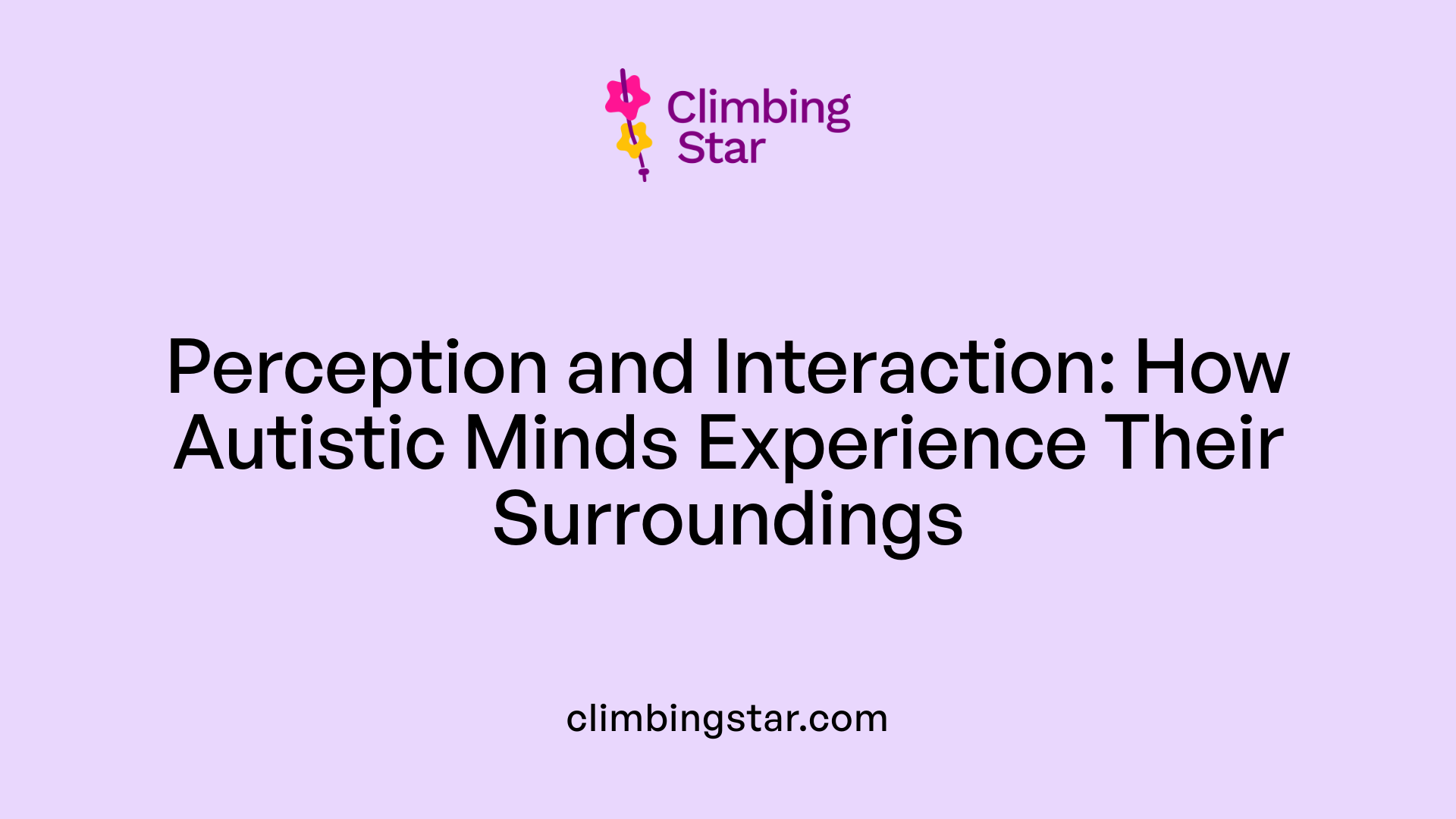
How do autistic individuals perceive and interpret their environment?
Autistic individuals often experience the world differently due to unique sensory processing patterns. They may be hyperreactive or hyporeactive to sensory stimuli, meaning they can be overly sensitive to sights, sounds, textures, tastes, and smells, or less responsive to these stimuli. This variation can cause perceptions to become fragmented or distorted, making it difficult to filter out irrelevant sensory information.
Such sensory differences affect how autistic individuals interpret their surroundings. For example, they might fixate on specific patterns or textures instead of faces or social cues, often viewing their environment in a more detailed or intense manner. This heightened perception can lead to sensory overload, where an overwhelming amount of stimuli causes discomfort or distress.
Some common reactions include sensory seeking behaviors, like touching objects repeatedly or moving rhythmically, and sensory avoidance, such as covering ears or avoiding certain textures. These behaviors help individuals regulate their sensory input because their neural pathways process information differently. Dysfunction in sensory gating—a process that filters unnecessary stimuli—may also contribute to these perceptual challenges.
Interventions like sensory integration therapy aim to improve sensory modulation, helping individuals better manage their environment. Environment modifications, such as reducing noise or bright lights, can make settings more manageable. Assistive technologies and tools are also used to support sensory regulation and improve perception.
Understanding how sensory differences influence perception is essential for providing effective support. When caregivers and educators recognize these perceptual experiences, they can facilitate environments that are less overwhelming and more inclusive. Ultimately, acknowledging these sensory processing differences allows for better communication, social interaction, and quality of life for autistic people.
Sensory sensitivities and reactivity to stimuli
Many autistic individuals display heightened sensory sensitivities, which significantly impact their daily experiences. Overreactivity to stimuli can cause discomfort, anxiety, or meltdowns, while underreactivity might result in missing important environmental cues. Sensory sensitivities can vary widely, with some individuals being extremely sensitive to specific sounds, bright lights, or tactile sensations.
Fragmented perceptions, sensory overload, and filtering process
The brain's altered sensory pathways in autism can lead to a perception that is more 'HD,' with detailed, vivid processing of sensory input. This can cause sensory overload, where the brain cannot efficiently handle the volume of incoming stimuli, leading to distress. To cope, many autistic individuals develop filtering strategies or stim behaviors such as rocking, hand-flapping, or focusing intensely on specific interests to manage overwhelming input.
| Sensory Aspect | Experience in Autism | Common Behaviors | Support Strategies |
|---|---|---|---|
| Visual | Focus on edges, patterns, or central objects | Avoidance of faces, fixation on details | Use of calming lighting, visual supports |
| Auditory | Over- or under-sensitivity to sounds | Covering ears, seeking certain noises | Noise-canceling headphones, quiet spaces |
| Tactile | Strong reaction to textures and touch | Avoiding certain clothing or materials | Sensory-friendly clothing, tactile toys |
| Olfactory & Gustatory | Heightened or diminished smell/taste | Covering nose, craving specific tastes | Aroma management, food preferences |
Understanding these sensory experiences helps in creating more accommodating environments. Recognizing that what seems like simple stimuli can be overwhelming or fascinating for autistic individuals emphasizes the importance of personalized support plans.
Neural and Mental Processes in Autism
How do autism-related perceptual differences influence an individual's inner experiences and mental processes?
Autism involves distinctive perceptual experiences that shape how individuals process both internal and external stimuli. Research indicates that autistic brains tend to produce approximately 42% more information at rest compared to neurotypical brains, creating a heightened state of perception across multiple senses such as sight, sound, taste, and touch.
This increased sensory input often leads to sensory overload, where visual, auditory, olfactory, tactile, and light stimuli are processed at a higher intensity. Such overload can cause significant emotional reactions, including anxiety, overwhelm, and stress. For example, an autistic person might find bright lights or loud sounds more distressing, impacting their emotional state and behavior.
Autistic individuals also experience differences in interoception—the internal sense of bodily signals like hunger, pain, or emotional arousal. Many find it challenging to recognize or interpret these signals, which can complicate emotional regulation and self-awareness. Difficulty in perceiving internal cues may cause delays in understanding one's own needs, sometimes leading to confusion, frustration, or emotional outbursts.
Furthermore, the sensory sensitivities and overload often influence thought patterns and mental focus. Autistic minds may engage in detailed visualizations or internal mapping, such as tunneling through memories or imagining complex inner worlds. These mental processes provide a mental refuge and help manage overwhelming stimuli, but can also result in internal barriers or 'walls' that hold back difficult memories or emotions.
Some autistic individuals conceptualize their inner world as vast and layered, with structures like doors, tunnels, and barriers representing different mental states, memories, and emotional responses. Such internal configurations serve as both protective mechanisms and complex mental architectures that influence behavior, emotional stability, and cognitive processing.
Overall, these perceptual differences significantly mold how autistic individuals experience their inner worlds, influencing their emotions, thoughts, and behaviors in ways that are both challenging and uniquely enriching.
Autistic Brain Dynamics and Cognitive Advantages
How do autistic brains differ in their way of processing information?
Autistic brains tend to produce about 42% more information while at rest compared to neurotypical brains. They are highly perceptive, experiencing heightened senses across sight, sound, smell, taste, and touch. This immersive perception allows many autistic individuals to notice details that others might overlook, contributing to remarkable talents.
What natural talents are linked to these unique brain processes?
Because of their intense focus and pattern recognition skills, autistic people often excel in areas requiring attention to detail and creative thinking. They may spot complex patterns, have exceptional memory abilities, and demonstrate hyperfocus on subjects that interest them deeply.
How do sensory sensitivities influence their abilities?
Sensory sensitivities can be a double-edged sword. Overload from sensory input can lead to challenges like meltdowns, but these heightened perceptions also enable some to have extraordinary talents such as recognizing patterns quickly or noticing minute details in their environment.
Are there advantages related to their mental processing?
Yes, the intense internal processing can translate into strengths like honest communication, innovation, and unique problem-solving skills. Their capacity to process information more
Supporting Neurodiversity and Inner Worlds
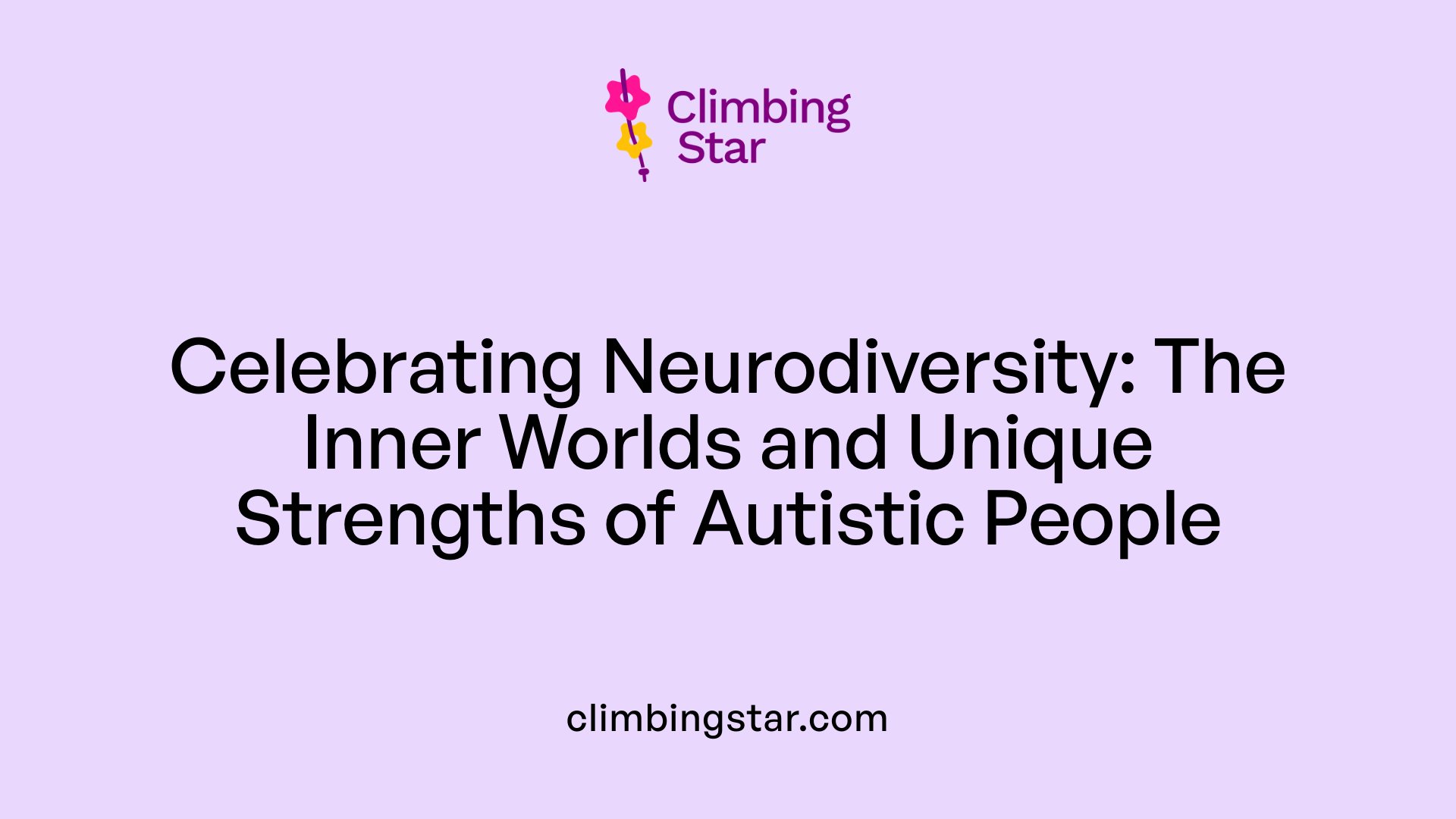
Celebrating neural differences
Autistic individuals experience and interpret the world in unique ways, often perceiving stimuli more intensely than neurotypical people. Their brains produce about 42% more information at rest, leading to heightened perception across all senses—sight, sound, smell, touch, and taste. These differences can result in extraordinary talents such as pattern recognition, attention to detail, and creative thinking. Recognizing these strengths helps foster a culture of acceptance and appreciation for neurodiversity.
Importance of accommodations for sensory and emotional needs
Due to sensory sensitivities, autistic individuals may become overwhelmed by light, noise, or tactile stimuli, resulting in sensory overload or meltdowns—neurological events caused by difficulty processing excessive input. Supporting them involves creating environments that reduce sensory load, like quiet spaces or dim lighting, and implementing routines that provide predictability. Additionally, many autistic people experience delays in emotional recognition and expression, known as alexithymia, affecting their ability to communicate feelings. Using clear, direct communication and accepting behaviors like stimming can help manage these challenges.
Empathy and understanding through personal insights
Understanding that autistic minds process information more intensely, often through inner worlds filled with visualizations and mental structures such as doors and tunnels, can deepen empathy. Many autistic individuals use internal visualizations to compartmentalize memories or manage overwhelming emotions, sometimes needing hours or days to fully recognize what they feel. Personal accounts reveal that these inner experiences, while complex, are essential for their sense of safety and processing. Embracing these perspectives builds more supportive and inclusive social environments, central to the ethos of neurodiversity.
Embracing a Different Worldview
Understanding how autistic people see the world fosters greater empathy, improves support strategies, and highlights the unique talents within the neurodiverse community. Recognizing the rich internal lives and perceptual uniqueness of autistic individuals not only aids their inclusion but also enriches society by embracing neurodiversity as a valuable facet of human experience.
References
- How People With Autism See the World
- What is autism
- Autism and Emotions: How and Why Do Autistic People ...
- Brilliant Autistic Brains: Seeing the World in HD
- How Autism Feels From The Inside
- Sensory Processing Differences in Individuals With Autism ...
- Autism and sensory processing
- Part 1: Brain & Sensory Processing Differences Across the ...
- It's Not Autism, It's Sensory Processing Disorder
- What Are Sensory Processing Differences and How Do ...







